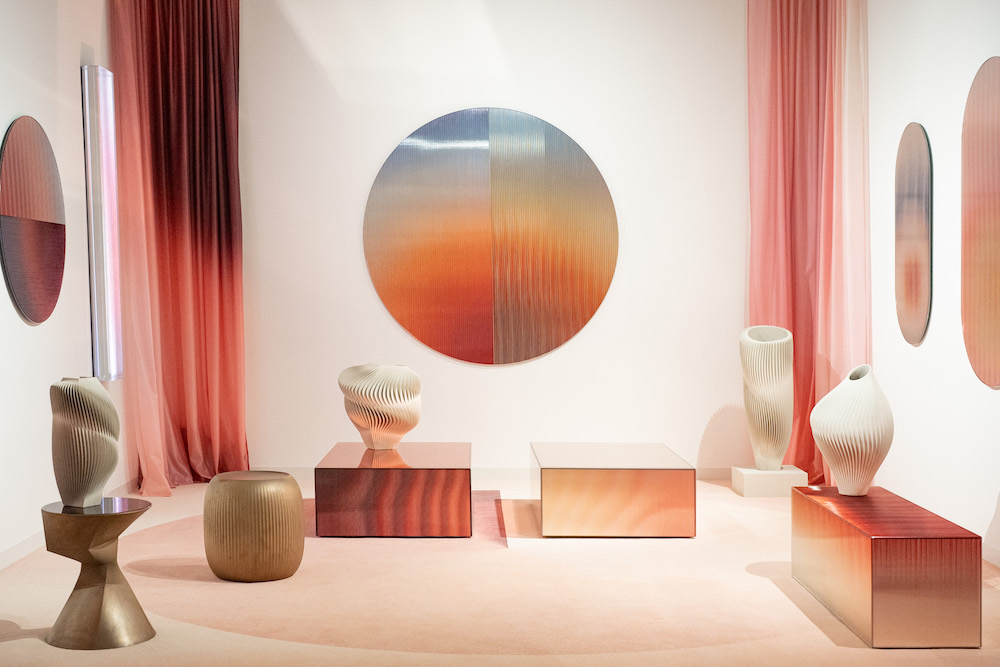On April 6 Whitewall and The Ritz-Carlton Residences, Miami Beach hosted an event with Amar’e Stoudemire to celebrate the collector and athlete’s “In the Paint” series coming to Miami, benefitting the Amar’e Stoudemire Foundation in conjunction with the artist Daniel Arsham.
Stoudemire, the basketball star, has been following contemporary art and emerging artists for several years, creating what he now calls the Melech Collection. Recently, through his eponymous foundation, Stoudemire launched the “In the Paint” series, which exposes at-risk youth to educational opportunities in the arts and basketball. Before the spring event, the organization previously held engaging youth events with the artists RETNA and Hebru Brantley.
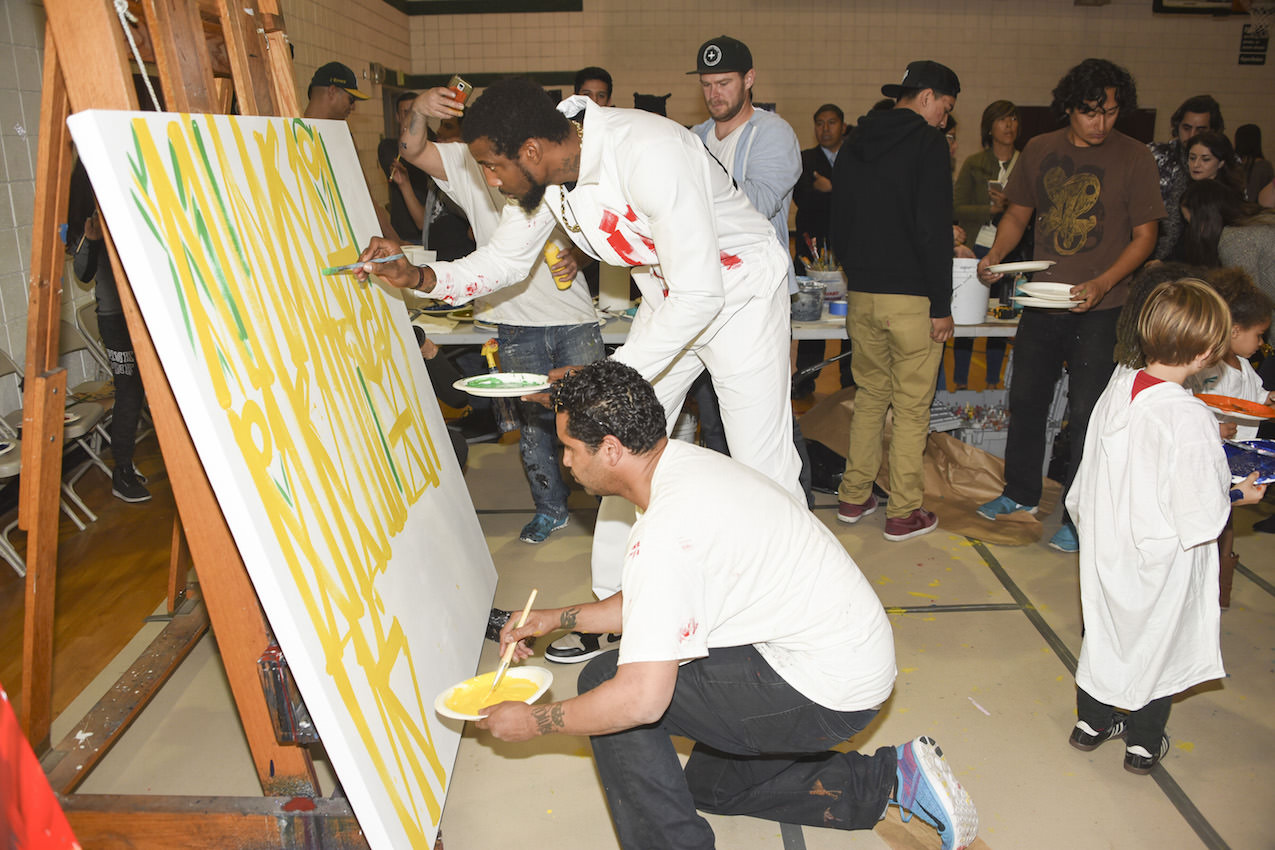
Photos from Amare Stoudemir’e & Melech Collection’s “In the Paint” series artist RETNA at Pan Pacific Park (image on right, by Michael Bezjian for WireImage).
The festivities marked the initial announcement of a new collaboration between Arsham and Stoudemire to benefit the foundation. Arsham, whose multimedia work has involved set design, architectural collaborations, film, and sculpture, was raised in Miami, and basketball played an important role in his childhood. His “Future Relics” series has included sculptural pieces referencing the sport, as will his upcoming exhibition at Galerie Perrotin this fall (September 15 to October 22), his first solo show in New York.
Whitewall was there as the two initiated a conversation about their future partnership for “In the Paint,” their shared interest and respect for the arts and athletics, on the beach of the Miami Beach EDITION hotel.

WHITEWALL: Let’s start by talking about “In the Paint” and why, Amar’e, you wanted to start this organization that teams up artists with underprivileged youth? This year so far Retna and Hebru Brantley have done workshops with kids.
AMAR’E STOUDEMIRE: I wanted to curate an opportunity to give back to the community and make it intriguing, make it fun for the youth. I figured why not bring in two of my passions: basketball and art. So I thought of this name of “In the Paint.” And me and my team STAT came up with an idea of how to involve both genres. We teamed up with the artists to figure out where they’re from and where they want to give back. Whatever community they wanted to give back to we would travel there, I would bring in the NBA, and we would have the artists and the students have a good time painting, and the other half of the kids that are not painting at the time they’d being playing basketball. And then what I would do for my foundation is I would donate a check to that event space, that school, that community center, that church, whatever it is, and I’d give to that particular venue.

WW: How would you, the two of you, like to work to work together for “In the Paint”?
DANIEL ARSHAM: We just started talking about it. But obviously Amar’e and I share an interest in basketball and art. I’ve made a lot of work that relates to basketball, I’ve made actual sculptures of basketballs, and I think that using basketball as a kind of in-road, that is something that is accessible to everyone. It’s in every community and art is not in every community. I think that the idea to create that bridge by starting with basketball and using communities that already know that sport, and introducing them to this idea, especially in relation to my work, is a really good way to do that.
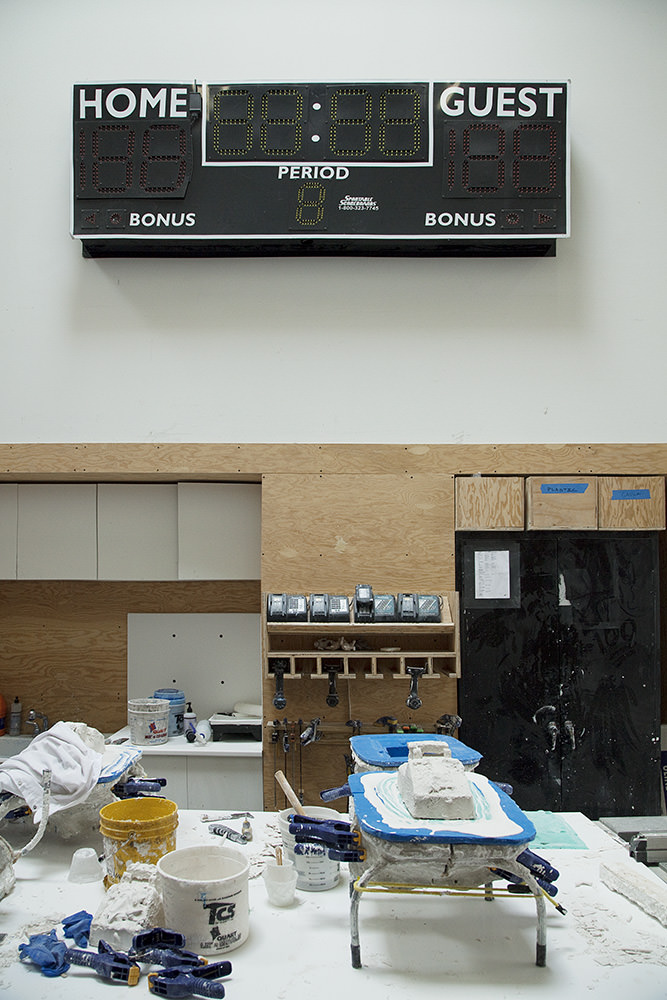
Photo by Steve Benisty
AS: I think with basketball and art, it’s such a multicultural experience to where when you collaborate both the worlds you get this emergence of joy and happiness. Because most students, you know they love to go to art class and hang out and paint and just create. A lot of students also love to play basketball—when it’s time for PE or afterschool activities. So it’s a beautiful collaboration.
WW: Amar’e, can you tell us about plans for “In the Paint”?
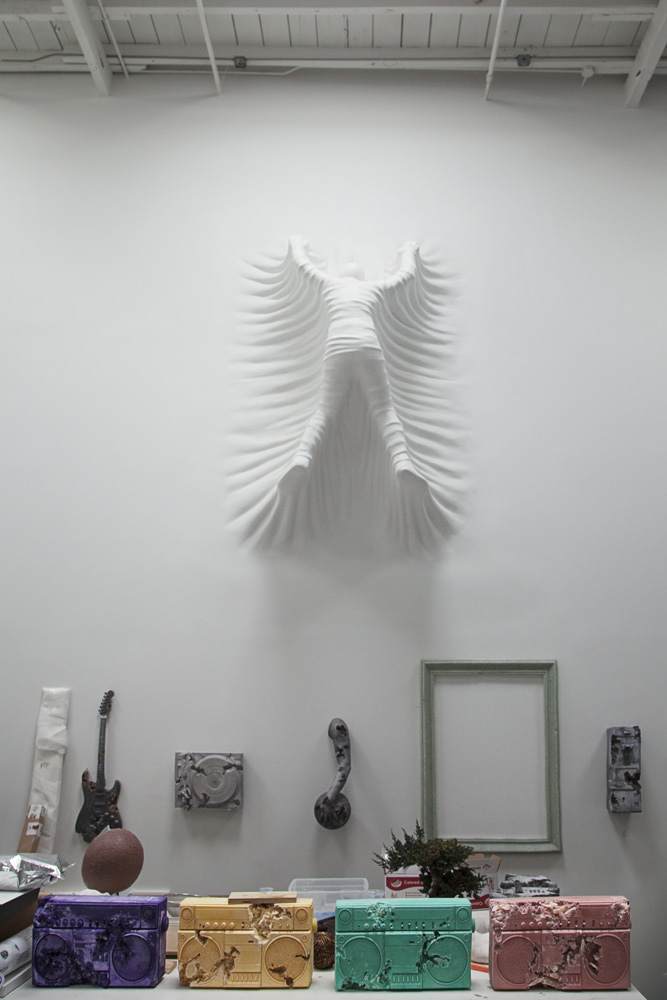
Photo by Steve Benisty
AS: Right now I’m teaming up with NBA Cares. They do a great job with their charity efforts and so I’m to make “In the Paint” more of a charity event. It’s already a charity event, but it’s going to be more if I can bring the NBA in as a sponsor. It’s going to help enhance not only the artists but also the community, and it’ll become a lot bigger than it is now.
WW: Growing up, did either of you have a significant arts education? How important was that for you?
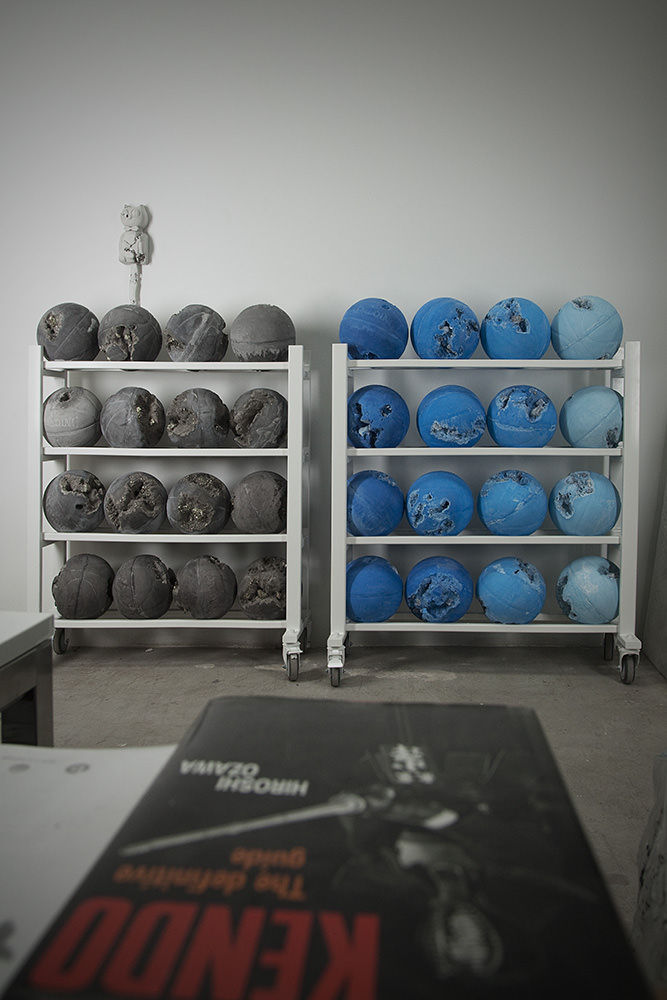
Photo by Steve Benisty
DA: I grew up here in Miami, and I went to magnet schools starting in fifth grade, studying photography and art. The whole magnet program is about this idea of mixing different communities. And that education continued all the way through college. I studied art in junior high school; I went to an arts high school here in Miami called Design and Architecture Senior High, which is entirely focused on design art and architecture.
WW: Amar’e, how about your art education?
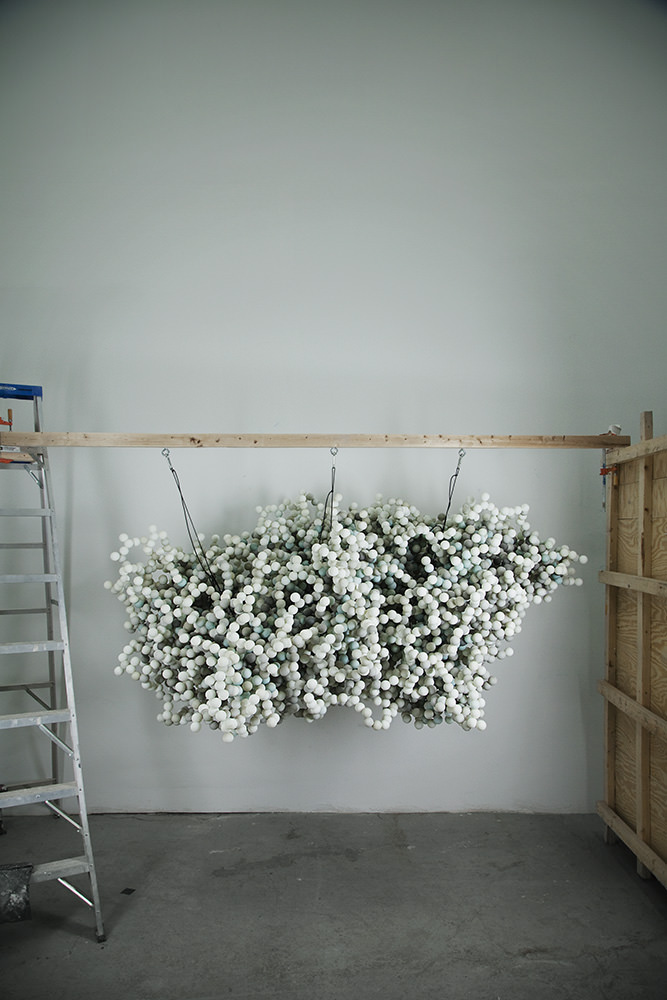
Photo by Steve Benisty
AS: I started growing a passion for art in 2007. I had a big birthday party and one of my friends plays a bass guitar in a band. There’s an artist that wanted to paint a portrait of me and gave it to my friend, and my friend gave it to me for a birthday gift. I saw this painting and I was like, “Wow, this is pretty fly.” I took it home, I hung it up on the wall, friends came over, they loved it and I felt like, “You know what? This is pretty cool.” And so over time, maybe three years later, I just start to notice different paintings and different pieces around town. When I got to New York, the friends that I was starting to be close with were major art collectors. And they were constantly talking about art and the art world and the importance of it and recommended certain books for me to read. So I was expanding my knowledge on art. And it took about three years before I felt totally comfortable enough to be able to start taking collecting seriously. So I would say in about 2010 or so was when I really started collecting art, and that’s when my education, as far as in the art world, really became legit.
WW: Amar’e, we hear that as you started to collect, you did so a bit atypically, bypassing the gallery system, and for instance, taking Rob Pruitt to a Knicks game and then buying one of his panda paintings.
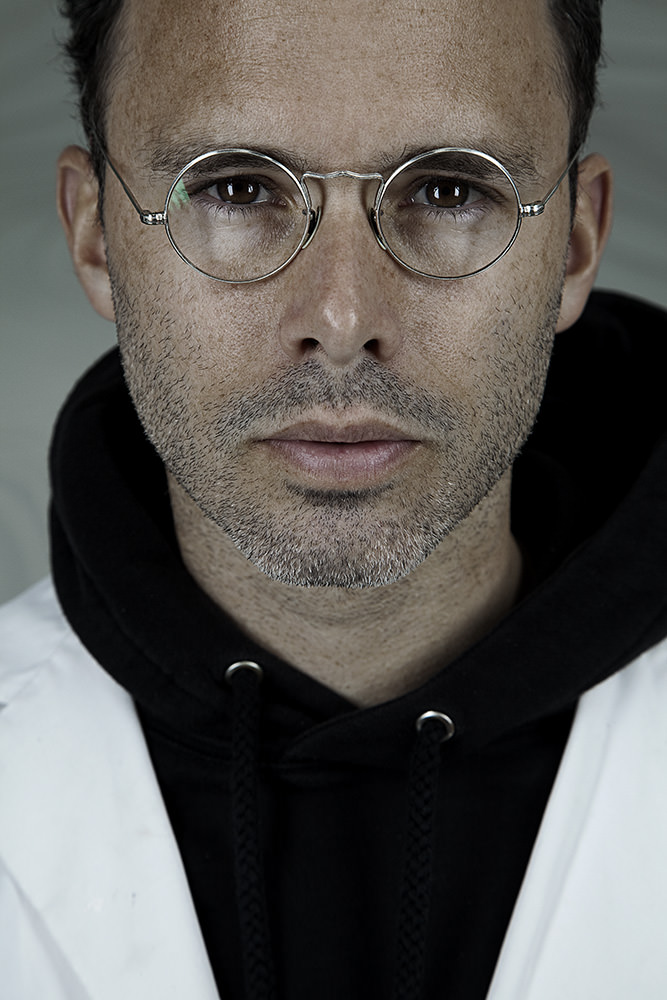
Photo by Steve Benisty
AS: What I wanted to do was build friendships with the artists, the actual artists. Get to know them, understand their point of view. And one of the first guys I met was Rob Pruitt. We became really good friends. My wife and I, my children, we went over to his studio, we painted and it got messy and they had good time. So we became really good friends. And I later on purchased one of his paintings, maybe a few months after that. But my whole thing was to build a friendship with him so that way years from now we could still be friends and we could still talk about art because we have the same passion for it.
WW: Daniel, your work has included images of sports and specifically basketball. You’ve created sculptures of basketballs as “relics” and recently a Knicks jersey, too. We also heard that your New York show this fall will have work that is basketball-related. Tell us about your interest in basketball and how that makes its way into your work.
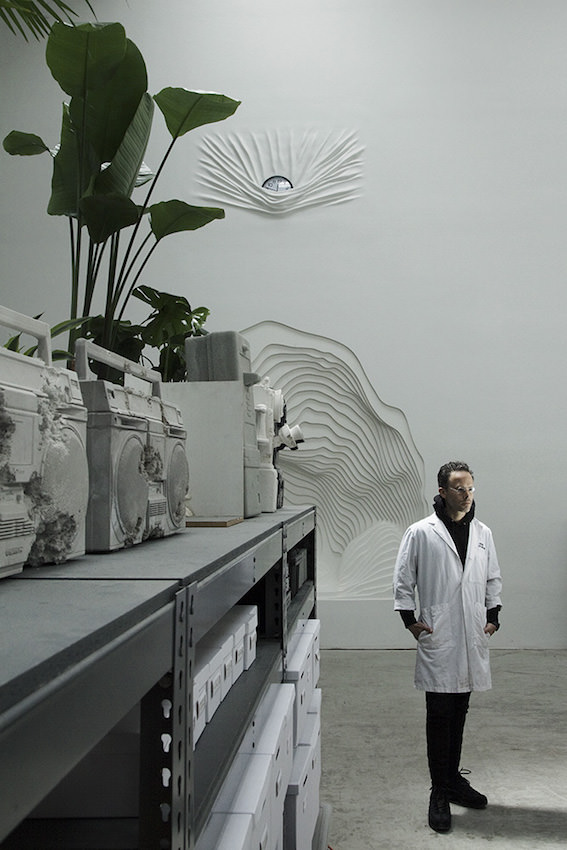
Photo by Steve Benisty
DA: A lot of my work has involved a kind of combination of antiquity and the present. And when I went back and looked at things from the past, historical sculpture, there are three sort of main areas that I saw depictions of: religion, war, and sports (or athletics). These are kind of the three major focuses, and when I began making these future sort of archaeological works, which are contemporary items that appear as if they have been on earth on some future archaeological site, I went to the sports that I thought were the most iconic in contemporary society. And in the States, basketball and football are kind of the pinnacle of culture. It’s part of growing up here, it’s part of the entire American and really world culture. So because it’s so iconic, it works as a good vessel to capture an idea about this moment in time.
WW: Amar’e, you’ve started to connect basketball players with artists, encouraging them to collect. Why?
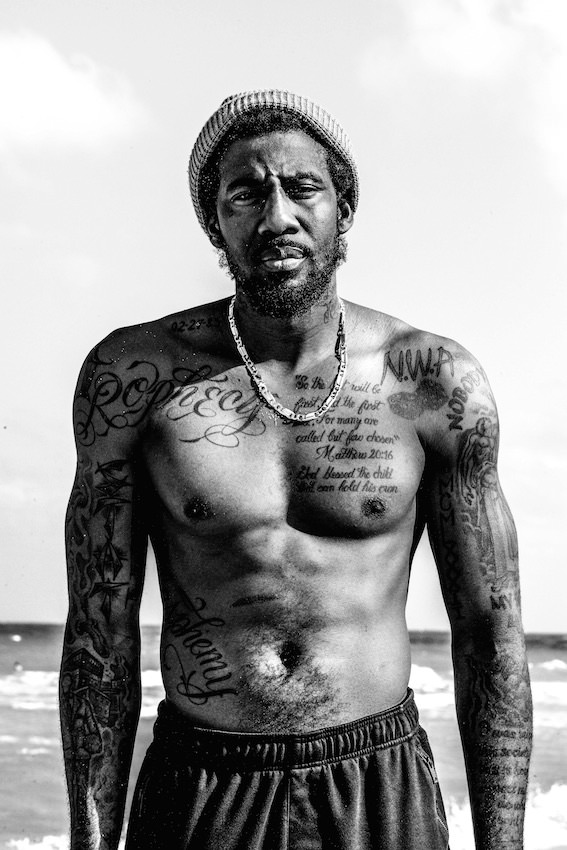
Photo by Daniel Arsham
AS: I feel it’s important for not only basketball players, NBA players, but also major athletes in general to start collecting art because for one, it appreciates. If you collect the right pieces, then the art appreciates. And it enhances your home. These guys, they go and buy these massive homes, and so why not have great pieces around your home? So I wanted to somewhat educate them on art and the importance of it and how to really get yourself involved, because for them the art world is very intimidating. It’s my job now to educate them on the art world so they can now start to broaden their horizons, and educating them on certain pieces and artists and going from there.
WW: Aside from the importance of supporting emerging artists, the possibility that the works will accrue value over time, do either of you see some points of a shared experience that athletes and artists can relate to or find in each other’s work?
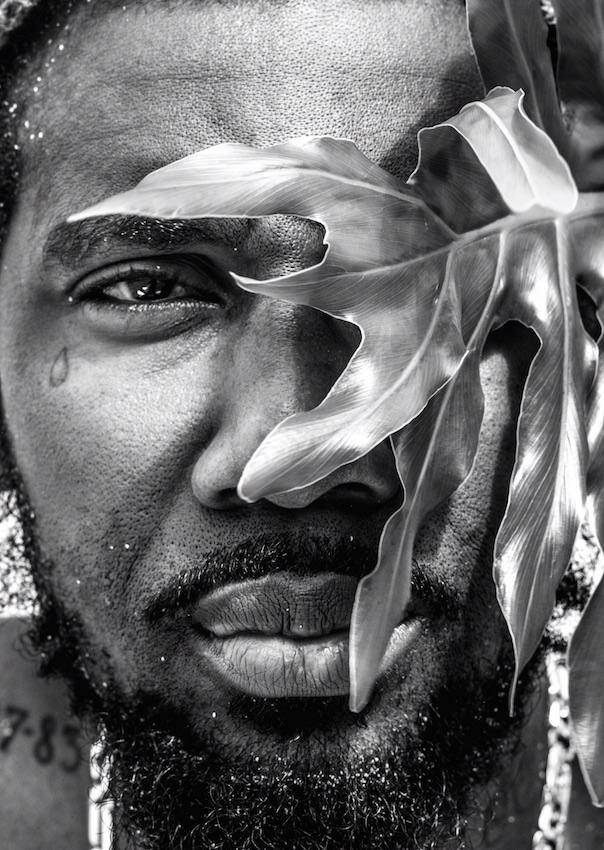
Photo by Daniel Arsham
AS: I think there’s a lot of relation between artists and athletes. For one, we love what we do. It’s like we never work a day in our lives; we just really go out there and enjoy what we do. It’s a passion that we’ve developed since we were very young. I know from an athlete’s standpoint, we learn so much from each other as far as teamwork and relationship and skill levels that you have to have in sports.
It allows us to travel the world and connects us to many different cultures. It gives us a new outlook on life. And art to me is the same. I’m sure Daniel can answer this better than I can, but I feel like you can really express your passion, your spirituality, when you’re painting and you’re alone and you’re in your zone. You’re in the zone and it feels like you’re in world by yourself and that’s a beautiful feeling.
DA: Their connection certainly is about perfecting the craft, right? Being an athlete is all about learning how to make the most perfect movement, right, which will result in, in the case of basketball, scoring points, but in the case of painting, it’s about learning the way to create a stroke. You may have to do that thousands, hundreds of thousands of times before you actually achieve this level of craft, that perfection. I wouldn’t say that I’ve achieved that and I’ve never kind of arrived at the moment that I feel like okay, now I’ve gotten there and I can’t do any more. And I think it’s probably the same for athletes, where even if you’re winning all the time, you always feel like there’s some other thing that you can arrive at.
WW: You both seem to have an interest in legacy, or in the future—Amar’e, you’ve said that the Melech Collection is not to be resold, but rather to be passed on to your children, et cetera; and Daniel, you’ve created film and sculpture around this idea of “future relics.” Could you both speak to that?
AS: With the Melech Collection, it’s more so to preserve culture. The pieces I collect I want to keep for family’s sake. For my children to say, “Hey, my father bought this piece in 2012,” but they’re saying that in the year 2040. I’m preserving history and they can look and see that this was history made and this was a beautiful painting. I have it here in the collection and it’s an everlasting piece. And so that’s why I collect museum-style paintings and the paintings I collect are not meant to be sold; they’re meant to really collect and keep.
DA: The future for me has always been fascinating because in some way we can predict it. We know that there will be certain things that will exist within at least the near future. But it’s this way to sort of encapsulate all of our hopes and fears right in one idea. There are projections of the future that are catastrophic and there are projections of the future that are beautiful. I like the possibility within that so I’ve explored that both in my sculptural work as well as in the films.
WW: Fashion is also a point of interest for both of you. Where do you see the connection of fashion, sports, and art?
DA: I just like fashion. I have number of friends who are designers. I think certainly there are friends of mine who are designers who have been heavily influenced by basketball. The guys from Public School, Maxwell and Dao-Yi, certainly come to mind. I think it’s more about a kind of cross-filtering of just a culture of people that I connect with—could be in fashion, could be in art, could be in sports or music. I connect with these people and somehow we all like the same things; it’s a zeitgeist.
AS: Fashion, sports, and art: It sounds like you’re calling my name. It’s like three of the best situations that you could possibly be in for me. Obviously, you know about my passion for fashion aside from art and basketball. But fashion is something that I developed in my early years. My mother was a seamstress; she was always into fashion. So I developed that passion as well. Once I got to New York, I started collaborating with Rachel Roy. Anna Wintour became a really close friend of mine. I began on the board of the Met Gala, and Ricardo Tisci is a good friend of mine. I was able to surround my self with top designers and become a force in the fashion world. When the commissioner David Stern implimented the new dress code for the NBA, I was the lead guy to bring in top designers, allowing their presence to be felt. Fashion became a part of me.
When you see the Russell Westbrooks of the world, you see Dwyane Wades of the world, you see guys that are into fashion, it all started because of me. And so now my job is to do the same for art.
This article is published in Whitewall‘s summer 2016 Design Issue.




